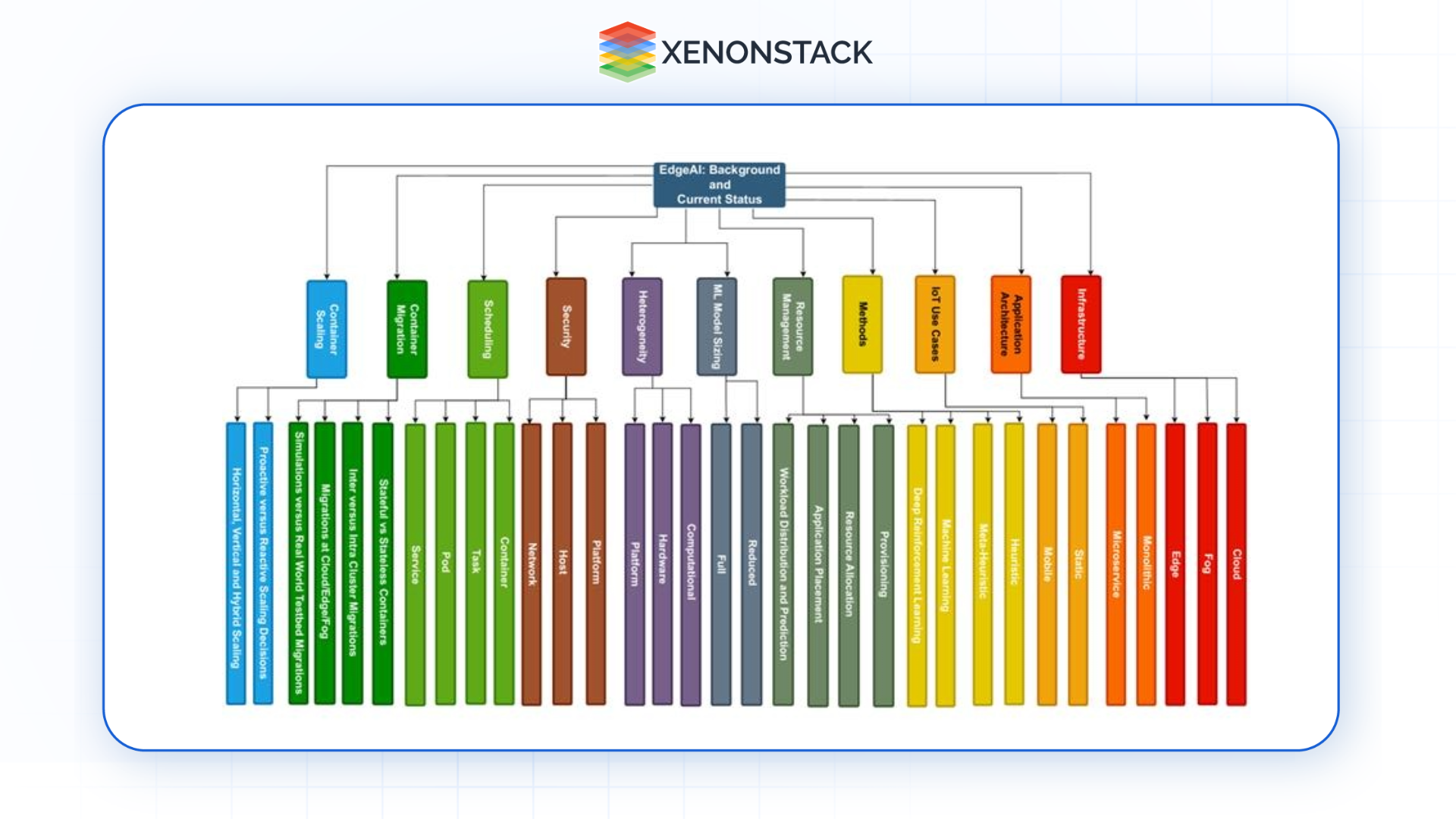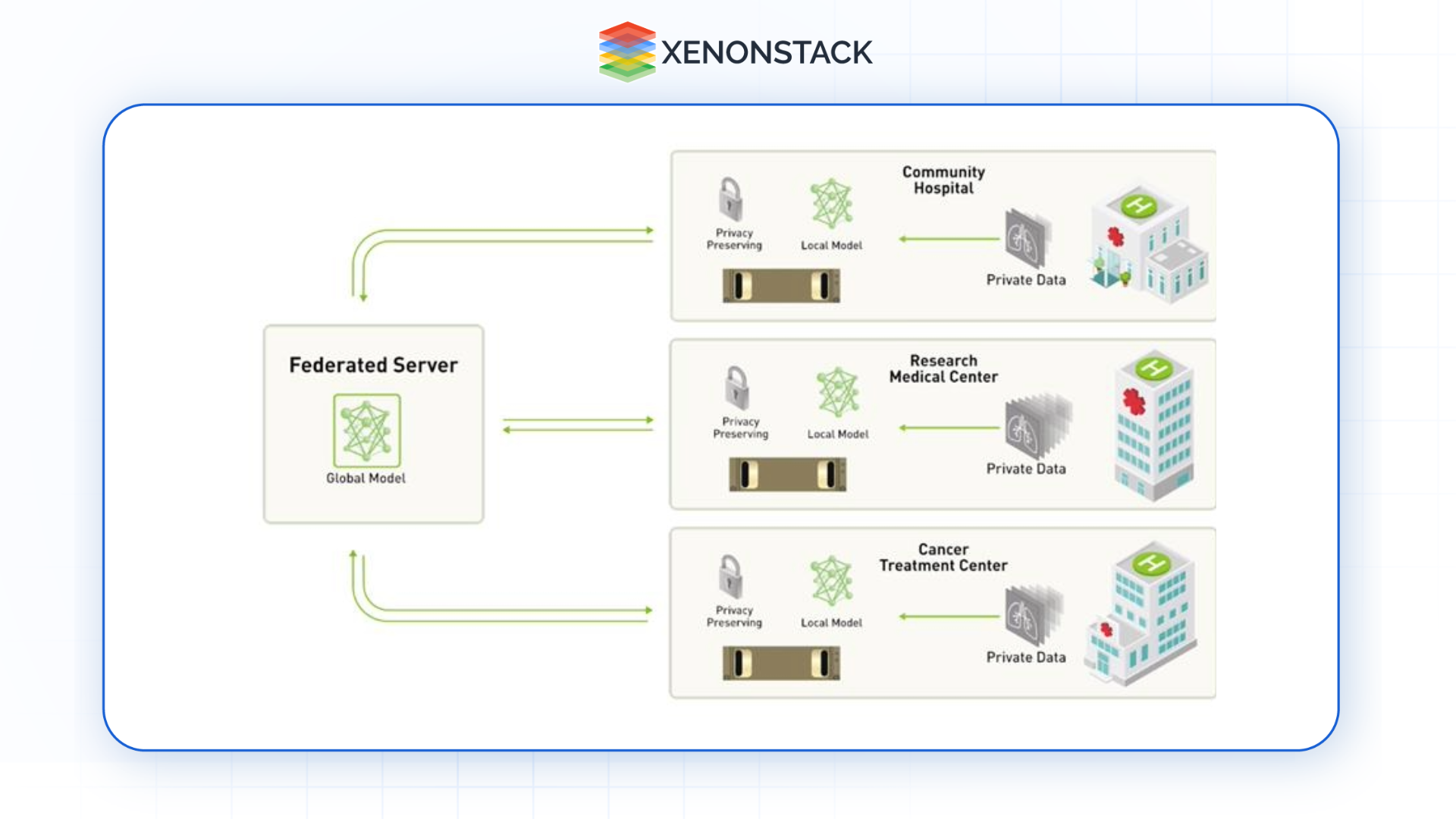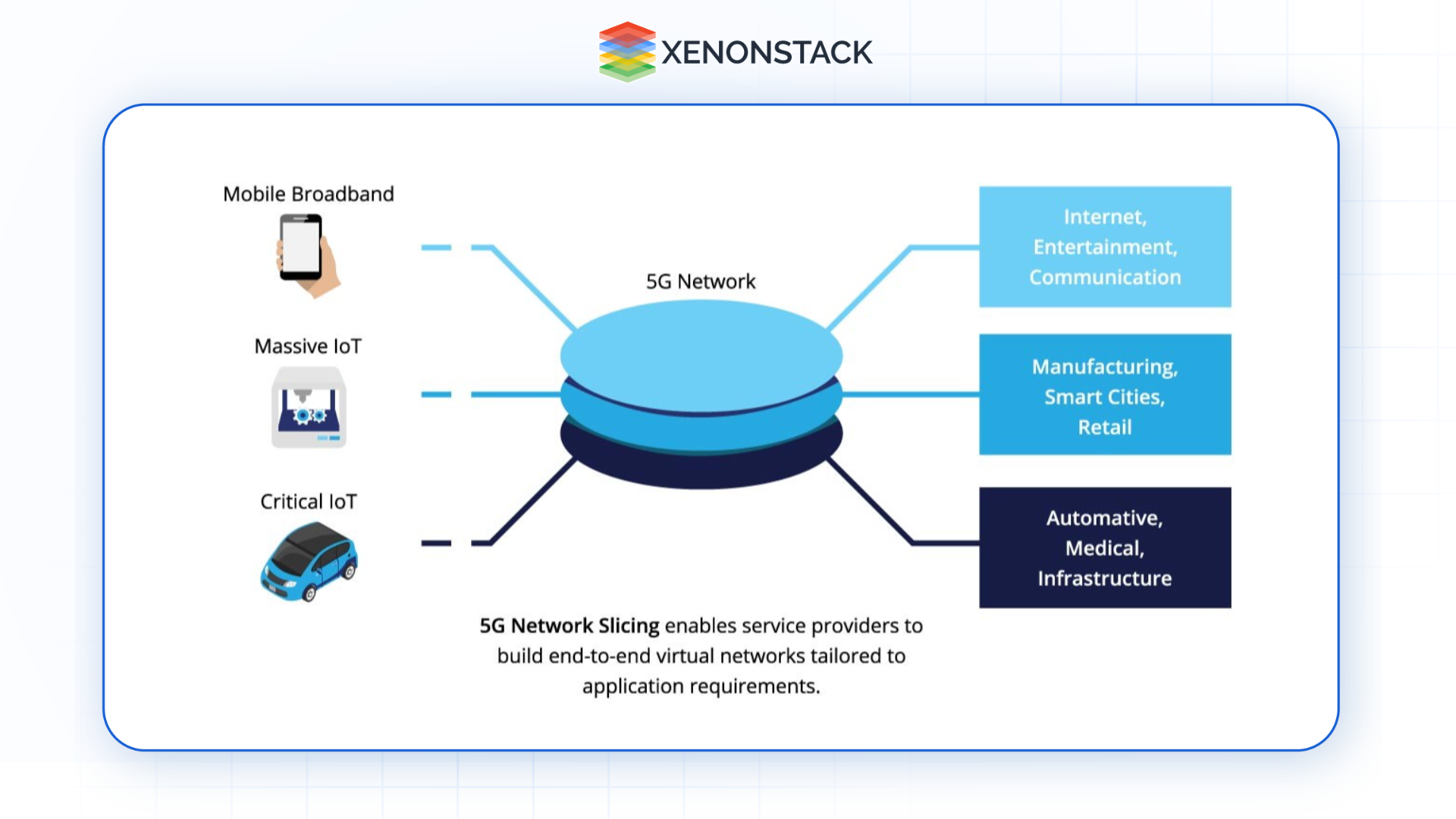As the digital world becomes more interconnected, two transformative technologies are leading the charge: edge AI and 5G networks. Together, their potential is to reshape industries as they become faster, wiser, and more responsive in various applications. This blog post describes the synergy between Edge AI and 5G and presents use cases, application benefits, drawbacks, and future possibilities.
Figure 1: The convergence of ICN-Edge Computing-AI for IIoV
What is Edge AI?
Edge AI, on the other hand, means using artificial intelligence within the edges, which may include smartphones, Iot devices, drones, and self-driving vehicles. Unlike Cloud AI, which leans on the remote server and processes a lot of information, Edge AI does this locally, minimising the time taken.
Key elements of Edge AI include:
-
On-device inference: Online schemes do not exist because AI models run locally on devices.
-
Low-latency performance: Partial or near-instantaneous responses apply, for instance, by removing the need for cloud interaction.
-
Privacy-focused solutions: Sensitive data is retained on the device, making it even more secure.

Figure 2: The Taxonomy of EdgeAI
What is 5G?
5G is the fifth generation of mobile network technology, characterised by:
-
High-speed data transfer: Downloading speed of up to 10 Gbps, much faster than 4 G.
-
Ultra-low latency: The possibility of response times being as low as 1 millisecond.
-
Massive device connectivity: Serves millions of devices per square kilometre.
-
Network slicing enables customised examples for specific uses.

Figure 3: 5G Ecosystem - confluence of 5G, Edge and AI (Source: IBM Institute for Business Value)
The Power of Integration
From this perspective, integrating Edge AI and 5G technology fits modern technology needs. Whereas Edge AI provides data management on the edge, 5G provides instant, high-bandwidth connectivity for interaction. Together, they enable systems to:
This integration brings opportunities in the part where latency, speed, and reliability are the key factors.
Applications of Edge AI and 5G Integration
Autonomous Vehicles
How It Works:
-
5G enables Vehicle-to-vehicle communication, also known as V2V, and vehicle-to-infrastructure communication, referred to as V2I, in order to ensure safety on the route.
Impact:
Smart Cities
How It Works:
Impact:
Healthcare
How It Works:
Impact:
Industry 4.0
How It Works:
Impact:
Gaming and AR/VR
How It Works:
Impact:
Retail
How It Works:
Impact:
 The Need for Combining Edge AI and 5G
The Need for Combining Edge AI and 5G
-
Ultra-Low Latency
While the latency range of milliseconds is acceptable for AV or telemedicine, it is rather high for video streaming. Thanks to 5G, the speed, and Edge AI being processed locally, latency is kept to a minimum.
-
Enhanced Privacy and Security
In Edge, AI computation is done locally and does not send much data to cloud servers; hence, data privacy is well protected by 5G encryption algorithms.
-
Scalability
5G enables many IoT implementations, while Edge AI allows every IoT device to compute independently. This flexibility is important for growth in applicability in areas such as smart cities and industrial process automation.
-
Cost Efficiency
On-site processing reduces the use of clouds, reducing the need to pay for the available bandwidth. Further, deploying an efficient 5G network cuts down on infrastructure expenses.
Challenges in Integration
-
High Implementation Costs
5G fundamental and Edge AI devices need infrastructure investment to build the network for their utilisation. However, the gainers usually exceed the initial loss incurred in the long run.
-
Model Optimization
Edge AI needs models that can fit into these devices and work with relatively low capability. Training and optimisation are still challenging, and they need simple and fully connected DNN models.
-
Interoperability
It isn't easy to manage how different devices and systems can communicate effectively within the network in 5 G.
-
Data Management
Another issue is managing the vast amounts of data Edge AI devices produce while performing efficiently and securely.
Trends and New Developments
Federated Learning
Devices in the edge AI systems can jointly train the AI models using exchanged gradients, but without the original data being sent across. 
Figure 4: A centralised-server approach to federated learning
Edge-to-Cloud Continuum
A hybrid system combines Edge AI and cloud AI, where the local processing is done, and the data is sent back to the cloud for heavy computation.
Network Slicing in 5G
Application-specific networks are more resourceful and effective; hence, the integration of 5 G-Edge AI is enhanced. 
Figure 5: 5G Network Slicing
AI-Powered 5G Networks
AI improves 5G performance for traffic flow and resource usage, providing better networks.
The Future of Edge AI and 5G
5G and Edge AI are still new trends, but together, they have no limits in possible applications. As infrastructure develops and technologies mature, industries will see:
-
More immersive experiences: Improvements in the efficiency, functionality and impact of Entertainment, shopping malls, and Education sectors.
-
Global connectivity: Royally integrated communication solutions in faraway places using satellite-supported 5G and Edge AI.
-
Autonomous ecosystems: Self-driving cars, self-made products, and smart communities or citie
The combination of Edge AI and 5G is revolutionising technology enhancement in the real world. Due to the possibility of real-time data processing and sharing, these technologies help industries advance, improve, and even revolutionise. From creating smart cities to enhancing healthcare response and optimising industries, Edge AI and 5G are building a world where technologies exist as close to people as possible.


.webp?width=1921&height=622&name=usecase-banner%20(1).webp)







